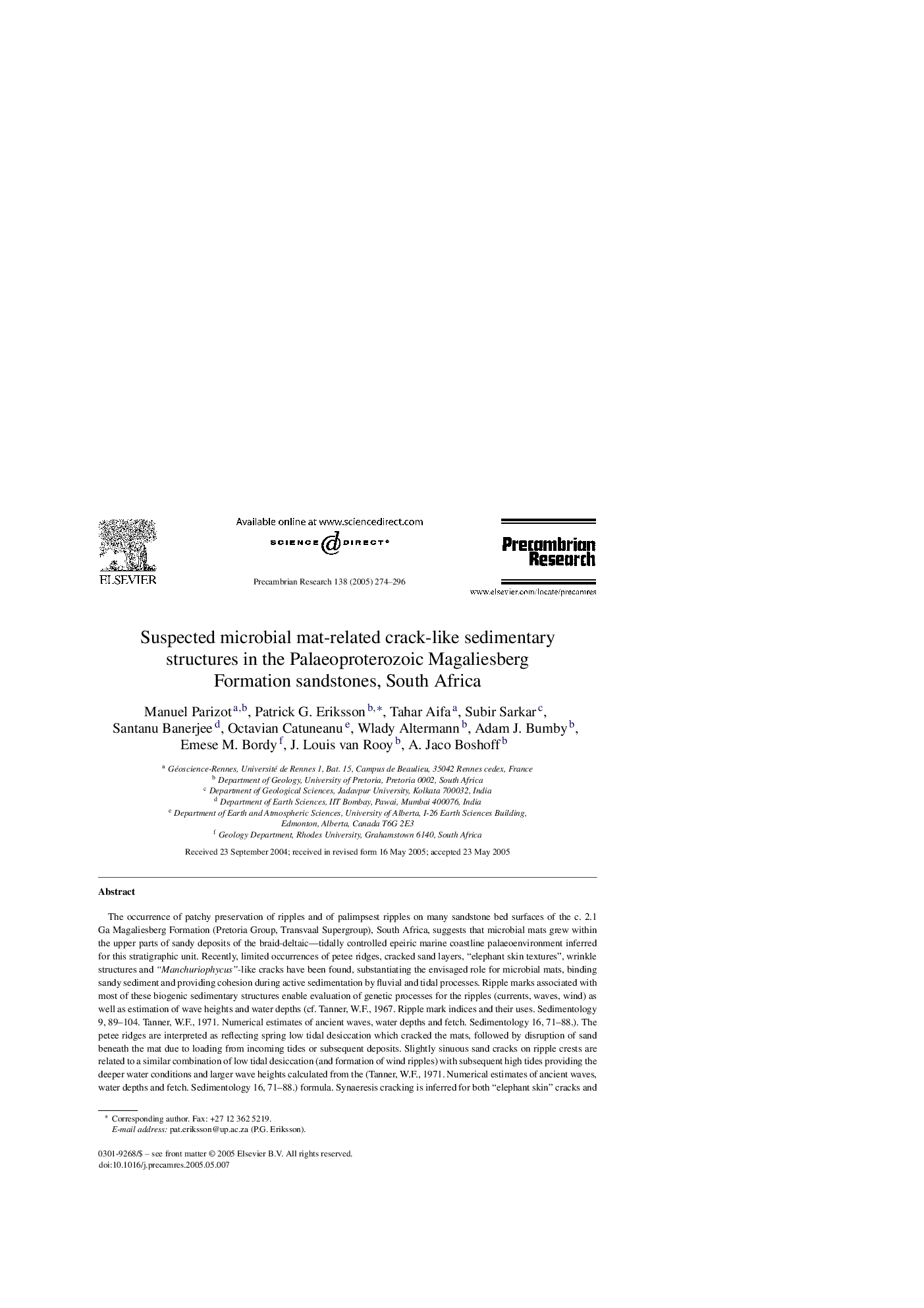| Article ID | Journal | Published Year | Pages | File Type |
|---|---|---|---|---|
| 9533810 | Precambrian Research | 2005 | 23 Pages |
Abstract
The occurrence of patchy preservation of ripples and of palimpsest ripples on many sandstone bed surfaces of the c. 2.1 Ga Magaliesberg Formation (Pretoria Group, Transvaal Supergroup), South Africa, suggests that microbial mats grew within the upper parts of sandy deposits of the braid-deltaic-tidally controlled epeiric marine coastline palaeoenvironment inferred for this stratigraphic unit. Recently, limited occurrences of petee ridges, cracked sand layers, “elephant skin textures”, wrinkle structures and “Manchuriophycus”-like cracks have been found, substantiating the envisaged role for microbial mats, binding sandy sediment and providing cohesion during active sedimentation by fluvial and tidal processes. Ripple marks associated with most of these biogenic sedimentary structures enable evaluation of genetic processes for the ripples (currents, waves, wind) as well as estimation of wave heights and water depths (cf. Tanner, W.F., 1967. Ripple mark indices and their uses. Sedimentology 9, 89-104. Tanner, W.F., 1971. Numerical estimates of ancient waves, water depths and fetch. Sedimentology 16, 71-88.). The petee ridges are interpreted as reflecting spring low tidal desiccation which cracked the mats, followed by disruption of sand beneath the mat due to loading from incoming tides or subsequent deposits. Slightly sinuous sand cracks on ripple crests are related to a similar combination of low tidal desiccation (and formation of wind ripples) with subsequent high tides providing the deeper water conditions and larger wave heights calculated from the (Tanner, W.F., 1971. Numerical estimates of ancient waves, water depths and fetch. Sedimentology 16, 71-88.) formula. Synaeresis cracking is inferred for both “elephant skin” cracks and “Manchuriophycus” structures. These inferred suspect-microbial sedimentary structures, when studied in relation to data derived from associated ripples, thus enable better estimation of depositional conditions within the Magaliesberg palaeoenvironment, and indicate minimum epeiric tidal ranges of c. 112Â cm. In general, these structures are found associated with evidence for shallower water and higher energy conditions, which probably protected the microbial mats from degradation by heterotrophic bacteria, through fast burial. A possible association of such mat-related structures with epeiric marine or passive margin coastline conditions may be pertinent for much of the Precambrian clastic record.
Related Topics
Physical Sciences and Engineering
Earth and Planetary Sciences
Geochemistry and Petrology
Authors
Manuel Parizot, Patrick G. Eriksson, Tahar Aifa, Subir Sarkar, Santanu Banerjee, Octavian Catuneanu, Wlady Altermann, Adam J. Bumby, Emese M. Bordy, J. Louis van Rooy, A. Jaco Boshoff,
